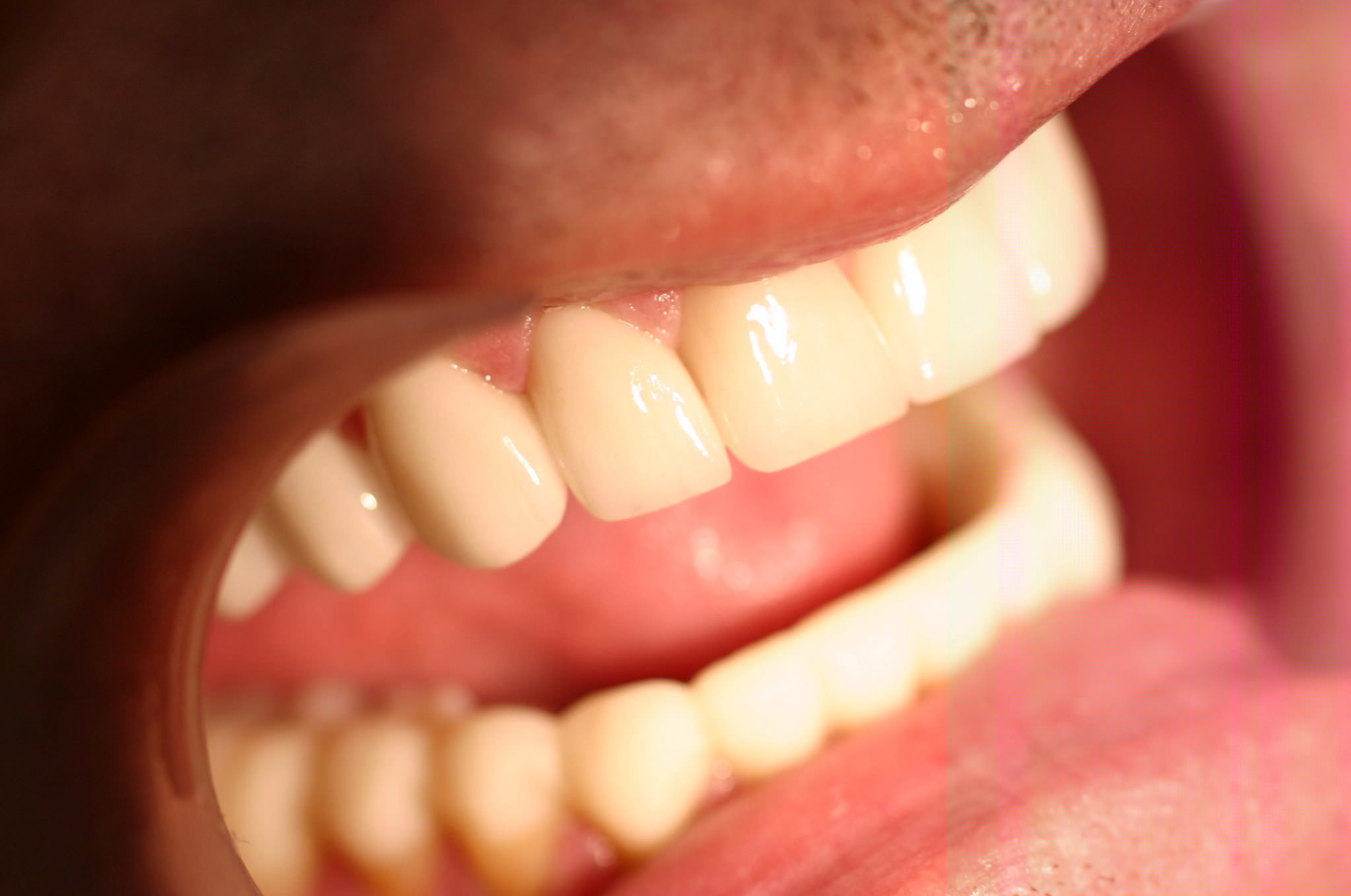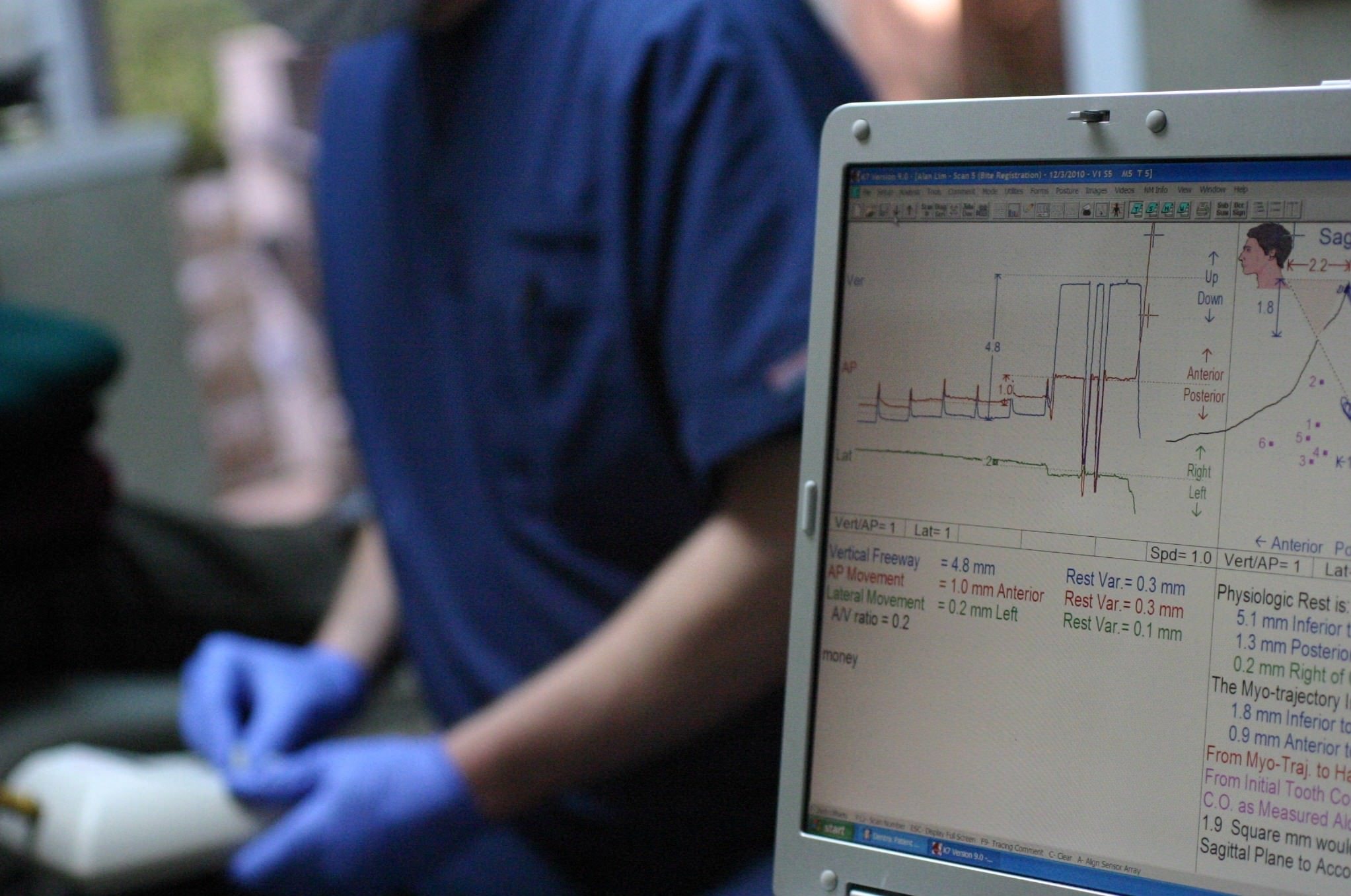Neuromuscular dentistry is the science of studying the muscles and nerves of the head and neck to determine an optimal orthopedic relationship between the upper and lower jaw. This will allow the rest of the body to align properly, and may help eliminate nagging symptoms due to a misaligned bite position. When the jaw is not properly aligned, damage can be done to the teeth as well as their supporting tissues. This approach to neuromuscular dentistry presents an effective, efficient and timely solution to those that suffer.
The dental professionals at Dr Ueckert’s practice focus on finding a harmonious relationship between the temperomandibular joint and its surrounding tissues. With the understanding that each person’s condition is unique, Dr Ueckert uses neuromuscular dentistry to provide proper occlusion to all patients. While not everyone can be cured by this process, he performs all treatments in a slow, thorough and meticulous manner; offering the best neuromuscular dentistry treatments available.
The teeth have a lot more to do with the body than most are aware of, and correcting any associated problems of the head and neck is where advanced dentistry comes into play.
Video Education
Finding the Right Bite

Electrosonography is used to listen to the TMJ opening and closing to ascertain whether there is any pathology within the joint space. If pathology is heard within the joint, then there may be a problem with the way the teeth fit together. This will place the joint in a poor position, which causes the pop and click that maybe felt and even heard. Once all the data is gathered and analyzed, the new optimal bite position can be identified.
Stabilizing the Bite

The restful position of the lower jaw is identified after 45-60 minutes of therapy. This allows an optimal range of motion to be discovered, which is driven by the muscles and nerves, not the teeth. Once the ideal position of rest has been found, an optimal bite position can then be captured. This neuromuscular approach is the cornerstone of our practice for successfully dealing with TMJ disorders.
Once the muscles have unlearned their “memory” path of contraction, the next neuromuscular dentistry process is to determine where the teeth should come together. This orthopedic bite position will allow the muscles and bones of the head and neck to be aligned in an optimal position. It is the optimal alignment of the head and neck system, supported by a stable bite position, which allows for treating the symptoms of TMJ disorder.
The new bite position is referred to as the “Neuromuscular bite”. With this information, an anatomic, functional, orthotic appliance is created that will replicate the neuromuscular bite position and stabilize this correct positioning. The orthotic fits over the natural lower teeth, and is worn at all times, except during brushing and flossing. It is recommended to eat with it in, as the muscles are retraining to function at a different, more optimal position. This is the “test drive” period of the new bite position.
Finalizing the Bite
Once the bite is stabilized and symptoms are significantly decreased or eliminated, it is time to make permanent adjustments. The new neuromuscular bite is used to develop a restorative plan that will permanently stabilize the bite at this new position. This may require placement of porcelain crowns, changing the shape of some teeth or possibly moving teeth with orthodontics.
This is a meticulous neuromuscular dentistry process that takes time and should not be rushed. The body does not heal overnight, and time must be invested to ensure positive results. If you believe you could benefit from neuromuscular dentistry, contact our office to schedule your consultation. We will be happy to determine your needs, guide you through the neuromuscular dentistry process and answer any questions you might have. Dr Ueckert is one of the country’s top neuromuscular dentistry specialists, and through this approach seeks to improve quality of life for all his patients.

